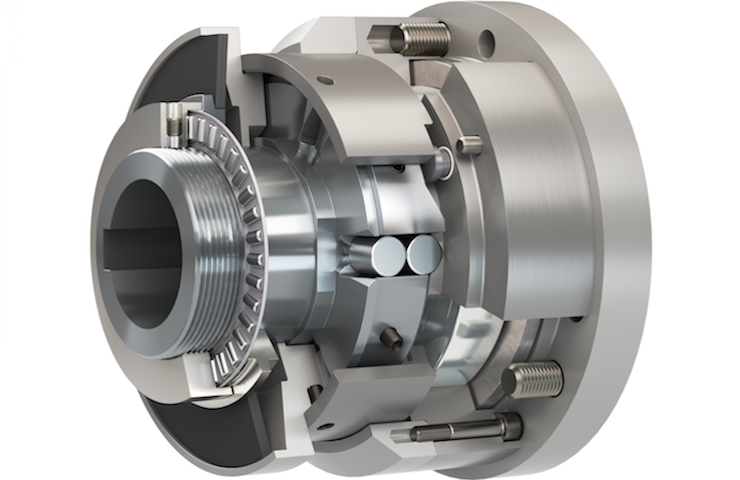Mayr’s new EAS®-reverse is a disengaging torque limiter on which all functional processes can be automated through the drive. It’s easy to handle, permits long run-out times and re-engages again through slow backwards rotation. A housing also makes the clutch resistant to dust or spray water, making it suitable for use in tough environments.
In case of rough operating and ambient conditions such as dust, dirt, spray water, heat or cold, the drive lines, particularly in heavy mechanical engineering applications, are frequently encapsulated and therefore hard to access. But these machines in particular require reliable overload protection. Mayr’s new torque limiter can withstand both high loads and automatically re-engage, which is suitable for drives without access possibilities for re-engagement.
On the EAS-reverse torque limiter, all functional processes can be automated via the drive alone. In case of overload, if the torque exceeds the value set on the clutch, a patented disengagement mechanism separates the input and output almost residual torque-free with high switch-off and repetitive accuracy. The kinetic energy from the rotating masses stored in the system can slow down freely. After responding, the clutch can withstand long drive run-out times. Through slow reverse rotation, the torque limiter re-engages automatically without the use of pneumatics or hydraulics.
The EAS-reverse torque limiter transmits torque with exceptionally low wear (< 0.05°) and features hardened functional parts. It’s easy to handle and represents adaptable, branch-optimised solutions with its numerous versions and additional characteristics. In this way, for example, the combination with an elastomer coupling permits easy separation of the drive line by loosening a few screws, without the motor or gearbox having to be displaced. In addition, applications with load-holding outputs can also be combined with a brake disk on the output side. The EAS-reverse can also easily be integrated into a solid housing with standard IEC or NEMA dimensions. It is thus protected against dust and spray water and resistant to adverse ambient conditions. The new torque limiter already covers the first three construction sizes with a torque range from 80 to 2,500 Nm, and this range is now to be extended with a fourth construction size up to 5,000 Nm and a bore diameter of up to 100 mm. The EAS-reverse provides permanent protection for machines and protects them reliably against overload damage, ensuring operational safety and maximum productivity.
For more information, visit www.mayr.com.



Leave a Reply
You must be logged in to post a comment.